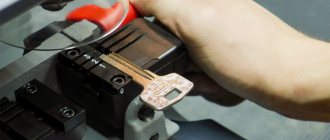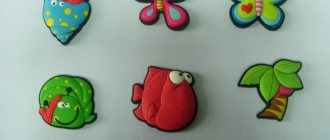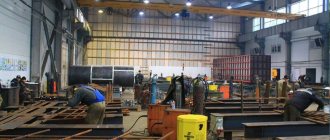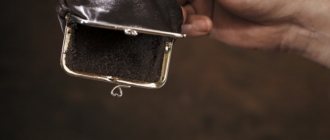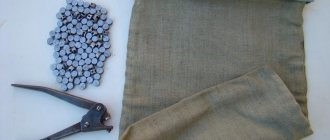- Which tea is more profitable to make?
- How to set up tea production
- Making herbal tea
- How best to sell products
- How much can you earn
- How much money do you need to start a business?
- Step-by-step plan for opening a tea business
- Regulatory framework Do I need permission to open a tea production workshop?
- Which OKVED code should I indicate for product sales?
- Which taxation system to choose for registering activities
Making homemade, individual, exclusive or simply homemade tea is a highly profitable and simple business. The tea business is attractive to a beginner because, with the right choice of market, you can start working with virtually no start-up capital. At the initial stage, you can produce herbal, fruit and any natural eco tea in your own kitchen. The first buyers are your friends and subscribers on Instagram or Telegram.
Which tea is more profitable to make?
There are a huge number of recipes for making herbal compositions: a combination of aromatic and neutral plants, fruits and leaves, petals and whole inflorescences. You can make green tea, supplementing it with exotic fruits, spruce or cedar - the variety is amazing and, as a rule, only applies to your imagination.
If there is a large assortment of black and green tea in the store, then you have to look for other types. About 75% of sales come from black varieties, 15% from green and only 10% of demand from herbal and fruit formulations. Moreover, according to statistics, approximately 80% of products are “prepared” to one degree or another. Nowadays no one is surprised by flavors, but they are almost always identical to natural ones. Even some types of single-ingredient black tea contain dyes and other non-Eco additives.
Proper promotion of your product will allow you to occupy the niche of eco-products. In the cold season, warming compositions are in demand, and in the summer, refreshing teas are in demand. That is why the easiest way for a beginner to enter the market is with a non-classical drink. For example, offering the consumer herbal preparations or blends with the addition of dried berries and fruits. Exotic drinks occupy a separate line.
A bouquet of Douglas fir, chamomile, lemon balm, anise and hyssop will definitely not leave your clients indifferent. You can combine this drink with forest honey, which you can also offer. This will require establishing relationships with trustworthy beekeepers.
Rating of black tea bags
On store shelves you can find a huge amount of black tea in bags, which differ not only in quality, but also in range and cost. Some brands widely use flavorings, while others, on the contrary, use only high-quality raw materials.
Greenfield
Perhaps the most popular brand of bagged tea. Each bag is packed in an individual foil envelope, which ensures better preservation of the tea leaves. Classic black tea has a rich, slightly tart taste. For those who want variety, the assortment includes many tea options with a variety of additives (mostly of natural origin). The cost is very reasonable - from 60 rubles for a regular pack of 25 sachets.
Tess
The tea is produced in the same way as Greenfield, although on the market these brands of tea look like competitors. It was Tess who was one of the first to produce pyramids, which allow the use of larger tea leaves, which provide more flavor and aromatic properties. The classic version of black tea has a tart taste with notes of honey.
The Tess tea line also includes a wide variety of varieties. Some of them have a very bright, slightly “chemical” aroma, which is probably created with the help of artificial flavors. The cost is slightly higher, starting from 80 rubles per pack of 25 sachets or 20 pyramids.
Lipton
One of the oldest tea brands, produced by the international corporation Unilever. It has a recognizable rich taste and pleasant aroma. In addition to black tea, there are many other flavors available. The price is about 80 rubles for 25 bags.
Princess Nuri
It is considered a budget tea, but is produced by the same company that produces the Greenfield and Tess brands. The quality of tea is assessed differently: some note that it has a very pleasant rich taste, others complain about a weak aroma. It is worth remembering that a persistent aroma may well be the result of the use of flavorings, but in this case, on the contrary, natural raw materials are used.
The line also includes varieties with flavoring additives, but in this case the variety of tastes and aromas is achieved with the help of flavorings. The cost of a regular pack of 25 sachets is approximately 50 rubles.
Richard
Despite the English name, it is produced by Russian. It has a bitter-tart taste and a pleasant aroma, and is slightly astringent. Some varieties have a “medicinal” taste, indicating the use of flavorings. Price – from 80 rubles for 25 bags.
Ahmad Tea
The manufacturer (Ahmad Tea company) states that high-quality, premium raw materials are used to produce tea. You can note the rich taste and pleasant aroma, there is no bitter aftertaste. Cost from 70 rubles for a regular pack of 25 sachets.
Brooke Bond
Produced by the international company Unilever (like Lipton), thanks to which we can claim the good quality of this tea. It has a pronounced tart taste, brews well, and has an astringent aftertaste. Costs approximately 60 rubles for 25 bags.
How to set up tea production
The main rules for organizing the production of herbal (and any) tea are similar to the requirements for collecting medicinal plants. To implement the idea, you will need to register a company, find suppliers of raw materials, and purchase packaging material. The production of herbal tea involves grinding the raw materials and packaging them in special filter bags. The already packaged product is placed in cardboard boxes and delivered to the buyer. Serial production of this noble drink requires the purchase of an automated line.
Manufacturing involves packaging: raw materials are delivered in large quantities from the countries where the plant grows naturally. In China you can order green and red varieties; India and Ceylon are famous for their black teas. For herbal drinks and uzvars, the best supplier is Altai, Siberia. The entrepreneur can only develop a recipe and add components that will create a unique blend.
There is no turning back, fermentation is behind us
Each stage of tea production requires compliance with strictly established regulations. After all, you just have to ignore the processing of raw materials, prolong the oxidation process or underdry the tea leaves, and from an invigorating drink with an exciting aroma, it will turn into a disgusting swill that you want to forget about from the very first second of tasting. This is why immediately after the fermentation stage comes the consolidation stage.
One of the components of this stage is steaming. Used mainly for the production of white tea, it takes no more than a minute and is aimed at stopping the oxidation process of tea raw materials. For oolongs, panning is used for the same purpose. Following high-temperature drying (250 – 3000°C), it lasts about 15 minutes and serves as a stimulus to stop fermentation processes. In some cases, this event is repeated, alternating from time to time with twisting.
The completion of the consolidation stage is high-temperature drying of the raw materials or firing, known in narrow circles as “beating the greens.” And first of all, this procedure is not aimed at experimenting with the flavor notes of tea, but at preventing the process of rotting and mold in the tea leaves under the influence of previously released cell sap. Representing a whole art, it does not tolerate mistakes. After all, if you only slightly overexpose the leafy raw material, it acquires a disgusting burnt taste, which initially discourages any desire to continue the tea ceremony. Under-dried tea quickly becomes unusable, and a promising purchase can be the ruin of all plans and hopes. As practice shows, the ideal option for high-temperature drying is tea raw materials with a water content of 2 to 5%.
Today, the equipment for roasting tea leaves is closed ovens with air blowing, but literally a couple of hundred years ago all the action took place on specialized baking sheets, frying pans and even grates placed over an open fire. The firing temperature previously reached 900°C, however, thanks to the ability of modern equipment to heat up to several hundred degrees, today the firing process itself has been reduced by 15 to 20 minutes.
Tea production is a very controversial undertaking. A competent approach to roasting tea leaves is still half the battle. An equally important detail is to cool the tea raw materials on time, and most importantly, as quickly as possible. Like any other organic substance, tea tends to smolder even after the roasting process is completed. To prevent spoilage of the resulting product, it must be cooled immediately after removing it from the oven. During the heat treatment of tea raw materials, a lot of different processes occur that improve the properties of tea:
- the process of oxidation of the tea leaf naturally stops;
- cell sap and special essential oils are released, setting the basis for the future tea drink;
- the shelf life of the product increases.
Making herbal tea
In the process of making herbal tea, as well as in the production of any of its types, raw materials play an important role. If stored improperly, it quickly loses its taste. That is why, when purchasing components, you should pay attention to the state of drying, the color of the berries and inflorescences.
An important point is the environmental friendliness of the herbs and the period of their collection. Many of them are medicinal and are prepared at a certain time. For example, St. John's wort, linden, and chamomile are famous for their fragrant flowers and are collected at the moment the inflorescences bloom; cloudberry, currant and raspberry leaves are collected in the spring, immediately after full bloom; fruits of currants, raspberries, rose hips - at the moment of full ripening.
It is also important to know the drying rules:
- ether-containing plants are dried at a temperature of no more than 30 degrees;
- leaves of St. John's wort, mint, lemon balm are dried at a temperature of about 60 C;
- fruits and berries must undergo heat treatment at 90 C.
The most valuable herbs are those that are collected in the period preceding their flowering, and dried on sunny days, in a natural way under canopies, and stored in a ventilated room. Each plant has its own harvest time, you need to remember this and not chase the price for wholesale quantities. Preparation of herbal mixtures is an individual process. These can be classic “grandmother’s recipes” or mixtures compiled according to individual preferences. Production can be:
- piece, making exclusives with your own hands in small quantities;
- small-scale. The production of tea on a company scale allows us to provide more than a thousand customers;
- high-volume. Full activity.
Production and processing stages
Drying or wilting
Once the tea leaves are plucked, they must be dried to prevent fermentation. This stops the activity of the enzyme that causes oxidation. To produce black tea, on the contrary, the raw materials are left for fermentation.
In China, green teas are often fired with flames in very large vats or with electricity in electric containers. The raw materials must be constantly stirred for uniform drying. Wilting is also used, in which the leaves are spread over racks of bamboo or woven straw to dry in the sun or using warm air. Again, constantly stirring.
In Japan, steam treatment is commonly used. Before the steaming process begins, the tea leaves are sorted and cleaned. The steaming time determines the type of tea that is produced, on average 30-150 seconds. Steaming is carried out in a bamboo container on top of water or using a rotating or belt conveyor. After mechanical steaming, the leaves go into a cooling machine, which removes the water from the leaves.
Shaping
Shaping is giving shape. In most countries, rolling or molding of green tea leaves is done by machines. China is leading the way with handcrafted leaves of various shapes, including curly, twisted, pointed, round and many more. Spinning the tea creates a distinct look and also regulates the release of natural substances and flavors when it is steeped in the cup.
In Japan, a series of rolling and drying steps are carried out. The first stages of rolling and drying are applied simultaneously on a special machine and take approximately 48 minutes. The tea leaves are dried to increase their strength and elasticity so that they can be pressed during the next drying process. This machine removes moisture from both the surface and the inside of tea leaves.
This machine consists of a spindle with elongated fingers that stir the leaves while heated air at a temperature of 93-97° Celsius is blown into the machine.
Since the moisture level after the first stage is still not uniform, both for different parts of one leaf and for the total mass, another rolling process occurs to evenly distribute the remaining moisture. The raw material is passed under a rotating disk to bring moisture from the center of the leaves to the surface. The process is carried out at room temperature for 24 minutes.
The leaves then move to another rolling/drying machine, which uses a rotating pedal inside a rotating drum to curl the mass. This process takes about 40 minutes. It is very important to remove the leaves at the same moisture level each time.
The raw materials are removed from the previous machine, divided into small portions and placed in pots. Under pressure, the leaves gradually curl into tiny round or needle-like shapes. This step takes 40 minutes and removes most of the moisture.
The overall process still takes about three hours compared to hand rolling and heating which can take up to 10 hours.
Final drying
In Japan, green tea is dried for about 30 minutes after the final rolling stage for storage. The tea is applied to a track-type device and slowly dried to 5% moisture content or less. At this stage, the semi-finished product called arakha is sent to tea traders or wholesalers for final processing. Araha is not uniform in size and contains stems and dust.
Post-processing
Once the tea is shipped to wholesalers in Japan, it goes through several other steps to produce the final product. A special machine sorts and cuts the tea according to size, shape and purity, depending on the desired final qualities. The machine uses mechanical sieves or sifters equipped with appropriately sized mesh and cutting devices to achieve quality tea.
This is followed by a drying step to extract the aroma, then blended to customer specifications, packaged and finally delivered to retail stores. In other countries, similar sorting, weighing and packaging operations occur after the molding process.
How best to sell products
Many people believe that herbal formulations are medicinal.
In fact, such drinks have a restorative effect and can warm you up in the cold or refresh you in the heat. If black tea has some contraindications, few people like the taste of green tea, then the light herbal composition is suitable for almost everyone.
You can sell herbal tea in different ways:
- creating your own VIP tea club;
- through networks of tea boutiques and retail outlets;
- using your own online store.
At the beginning of business development, it is advisable to carry out an advertising campaign, which is the main tool on the way to informing customers. But this will require some funds. Your own VKontakte group, Instagram and other social networks will help you make your products recognizable.
By offering your own products to friends and acquaintances, you can achieve better results in a short time.
Natural herbal tea must be of high quality - this is the main requirement for an aromatic drink on the way to popularity.
Three steps to the tea ceremony
Some tea varieties are mixed with pieces of fruit, flowers, various herbs and specialized additives. Such extravagant experiments include “Caribbean Blend” (with the addition of cornflower and sunflower petals), “Treasures of Japan” (Sencha and Long Jing + red currants and strawberries), “Sousep” (an original combination of pineapple pieces, cactus and pomegranate inflorescences, pink buds) and others.
Further, regardless of the production technology, all teas are sorted (by machine or manually). After evaluation by testers, the resulting product is labeled, packaged and sent for sale. After months, or even years, the long-awaited tea drink becomes a decoration for family gatherings or meetings of old friends.
If you drink tea for a long time, wings may grow. Lu Yu
How much can you earn
The profitable part of the business depends on entrepreneurship. If the mini-workshop is fully loaded, the income will be from 150 thousand rubles: the production line is capable of producing 70 thousand packages per month. When the cost of 1 package of the simplest herbal tea is 50 rubles. the profit will be about 350 thousand rubles. After paying all expenses, the entrepreneur will receive slightly less than half of the net income.
But you can count on this amount by organizing mass production and designing your own brand.
At the beginning of development, income will be slightly less. For example, a VKontakte group for 1000 people will provide a profit of up to 50 thousand rubles. per month, sales via YouTube and telegrams will increase income by another 75 thousand rubles.
Business profitability is 45%. Full payback occurs in the first six months of successful activity.
“We are greeted by clothes”, or the stage of processing tea leaves
The specifics of actions at this stage will depend entirely on the intended goal. That is, if you plan to obtain an elite tea variety, the best masters of their craft perform all manipulations by hand, passing on the art of tea making from father to son for several centuries. Gradually oxidizing and changing its color from natural green to brown, the tea leaf undergoes the tedious process of liberation from a certain amount of flavonoids and catechins. The result of this action is the formation of a specific taste that distinguishes this tea variety from all others. And rest assured that Darjeeling Maskatel and Maharaja are not the same!
In general, processing tea leaves usually involves performing two integral actions:
shaking tea in bamboo baskets to improve fermentation of tea (more typical for making oolongs);
easy grinding (becomes a stimulus for the release of cell sap).
Shaking is done in order to gently crush the edges of the tea leaves and, through further drying, give them a slightly rusty tint. It is said that the person responsible for this action must have a certain amount of strength to shake the basket and the wisdom to know when to stop.
How much money do you need to start a business?
The costly parts of the natural tea production business depend on the line of business. You can organize a small enterprise with 200 thousand rubles, which will be needed for registration, purchasing a batch of raw materials and manufacturing packaging.
To launch an automated workshop you will need:
- obtain permission to operate - 50 thousand rubles;
- rent a premises and carry out repair work in compliance with the requirements of the SES and fire inspection - 300 thousand rubles;
- purchase a line for the production of bagged tea – 700 thousand rubles. (used equipment is cheaper);
- create an advertising campaign, website, online store – 200 thousand rubles;
- purchase raw materials - 250 thousand rubles.
If you have 1.5-2 million, you can organize a modern production of herbal tea. In the initial stages, costs can be reduced. For example, purchase a used line, refurbish your own premises, or conduct smaller-scale advertising.
A little drying won’t hurt – the withering stage
The main purpose of this stage of tea making is to dehydrate the tea leaves. During this period alone, it is capable of losing up to 55% of moisture. However, optimal withering indicators may differ in some countries. So, for tea originally from Northern India, 40% moisture loss will be sufficient, and for Ceylon “ambrosia” the figure should be at least 50%.
There are usually two modern options for withering:
- in the sun;
- in room.
In the first case, the resulting raw materials are laid out in a thin layer (no more than 12 cm) in special baskets or on multi-storey synthetic nets. If some leaves are subjected to withering under the natural rays of the caring sun, then others become “hostages” of artificial conditions for the same process.
When the tea leaves are withered in a ventilated room, the selected material is laid out in a thin layer on lattice racks and periodically turned over by hand (within 8 to 10 hours). Thus, the cellular structure of the leaf is partially disrupted, allowing air to penetrate inside and create optimal conditions for its effective fermentation.
In any case, this stage can take 10–24 hours with natural withering, or much less time (reduced to 3–5 times) with artificial withering in dryers. Which one will be preferred will depend not only on external factors (wind strength, temperature and humidity, etc.), but also on the variety planned for production.
The traditional result of this stage of tea production is the acquisition of incomparable elasticity by the tea leaves. A decrease in cellular pressure (turgor) and the viscosity of tea leaf juice becomes the key to effective rolling and fermentation of the leaf in the future.
Step-by-step plan for opening a tea business
Where to start making natural tea? The first thing you need to do is learn how to prepare aromatic mixtures and offer them to your family and friends.
Next, you need to register with the tax office, enter into agreements with suppliers of raw materials, obtain all permits for the production of a natural drink, and create groups on social networks. The first batch should be distributed among friends, the second should be sold via the Internet.
To open a large-scale production, you will need to rent appropriate premises. It should be large enough to accommodate all the necessary equipment. As a rule, when creating a production area, three zones are created: for receiving and storing raw materials, packaging and storing finished products.
Briefly, the step-by-step plan for organizing tea production is as follows:
- conducting marketing research, drawing up a business plan;
- obtaining permits;
- concluding agreements with suppliers of raw materials;
- rental and arrangement of premises;
- carrying out an advertising campaign.
How tea bags are made
Tea bags consist of two main ingredients: processed tea leaves and filter paper. Filter paper is made primarily from abaca, a leafy Philippine banana plant also known as Manila hemp.
The technology for making bags is as follows: two large rolls of filter paper are fed above and under the dispenser wheel. As each chamber enters the bottom of the dispenser, it releases the tea onto the bottom paper layer as it moves along the conveyor belt. The top layer of paper is lowered onto the bottom layer so that each measure of tea is sandwiched between the two layers.
A conveyor belt moves the three components into a shrink drum equipped with an indentation pattern. The drum quickly seals the paper along the indentation lines. The timing of this process is carefully controlled because too much heat will negatively affect the tea.
The printed paper continues to move along the conveyor belt until it reaches the punch hole, which is calibrated to cut the paper into precise squares. Once the string and tag are attached to the bag, they are packaged in pre-printed boxes with the corresponding tea brand.
Regulatory framework
Like any business, tea production requires registration with the tax office. You can register your activity either as an individual business or as a legal entity. It is worth noting that buyers trust LLCs much more than individual entrepreneurs.
To create a small production, an individual entrepreneur is suitable. In the future, if there are wholesale orders, you can also register an LLC.
Do I need permission to open a tea production workshop?
The activity is not subject to licensing. But still, the production of food and drinks requires the preparation of a package of permits:
- coordination of technical production conditions with SES, fire inspection;
- coordination of recipes;
- permission from the veterinary service;
- certificate of product compliance with SES hygienic standards.
Local governments may have an expanded list of requirements in the region. That is why it is necessary to find out in advance all the nuances of registering production with local regulatory authorities.
Which OKVED code should I indicate for product sales?
In accordance with the all-Russian classifier, the OKVED code 10.83 is used for the production of herbal tea or other type of drink.
Which taxation system to choose for registering activities
OKVED code 10.83 allows the use of a simplified taxation system with a rate of 6% or 15%. The first option requires confirmation of all expenses. The second taxation option, namely 15% of the income received, is much simpler and does not require documentary evidence of the expenses of the business.
Marketing and sales channels
In the structure of sales channels for bagged tea, the main place is occupied by self-service and non-self-service stores, as well as wholesale buyers. In other words, stationary retail and wholesale outlets selling food products. For this reason, signing contracts with these market operators comes first when planning sales.
Sales volumes will be increased by specialized dealers - companies selling tea. Such market entities have established sales channels and knowledge of the main players in the market. Finally, the manufacturer enters into agency agreements with independent food retailers who are not major players and do not have distribution networks.
Advertising and marketing efforts are aimed at increasing product recognition, creating properties in the minds of end consumers that distinguish them from a number of competitive products. Such distinctive properties are the original packaging, the shape of the bag, the number of bags in the package (for example, not 20, but 22).
A successful product has a memorable name and slogan. Marketing campaigns will help increase sales and awareness: for example, a tourist package to a tea-producing country in every 10,000th package. Or free tasting in supermarkets with the distribution of souvenirs. There are no limits to imagination in this area.
Purchase of raw materials
To produce bagged or other tea, you must purchase only certified raw materials. The documents must necessarily contain radiological, microbiological indicators, the presence of pesticides and heavy metals in the leaves. Otherwise, you need to conduct an examination yourself, and this is a very costly and lengthy process. To find suppliers of black and green tea, you need to establish contacts with wholesalers from China, India, Sri Lanka, and Indonesia. Preference should be given only to high-quality varieties of the drink - extra and premium. In Russia, tea plantations exist only in the Krasnodar Territory.
As for herbal preparations, it is much easier to find raw materials here: the surrounding plants can be an ideal option for production.
CTC – 3 steps to bliss
Some varieties of tea (in particular, Crush Tear Curt) undergo 3 stages of processing during the tea production process - in addition to traditional shaking and grinding, they are machine twisted. It is generally accepted that this technology underlies the production of low-quality teas. Soulless machine processing of tea leaves cannot ensure the proper quality of the final product, which is why many tea gourmets avoid such varieties. However, it is the automated process that makes it possible to significantly increase the volume of tea production, while being able to process previously “written off” leaf raw materials. In addition, mechanical installations have the unique property of producing incredibly strong tea even from raw materials of mediocre quality. Rolled into granule balls, tea leaves are sent for oven drying or dehydration in any other way.
Composition of mixtures for making herbal infusions
Herbal infusions are compiled individually. Naturally, you can make tea from certain herbs, but the mixture is much tastier. Aromatic herbs (mint, lemon balm, oregano, thyme) are not combined with each other, since their stronger aroma displaces all other tastes. That is why fragrant herbs are combined with neutral ones.
The components may be different:
- vitamins that contain raspberries, rose hips, cherries, currants, apples, etc.;
- cooling or warming;
- aromatic and not very fragrant.
The most useful plants for making tea are considered to be rose hips, raspberries, currants, chamomile flowers, mint and lemon balm leaves, and linden inflorescences.
What criteria do you use to choose the best tea bags?
To enjoy delicious and aromatic tea, and not endanger your health, you should pay attention to the following factors:
- High-quality packaging, which contains detailed information about the production, composition and shelf life of the tea.
- Compound. Ideally, the product should not contain artificial flavors or colors.
- Best before date. There should be quite a lot of time left before it expires.
At home, you should carefully examine the inside of the packaging. There should be no tea dust or other debris.
You can also cut one of the bags and examine the raw materials. It must be uniform in both shape and color, and must not contain foreign inclusions.
